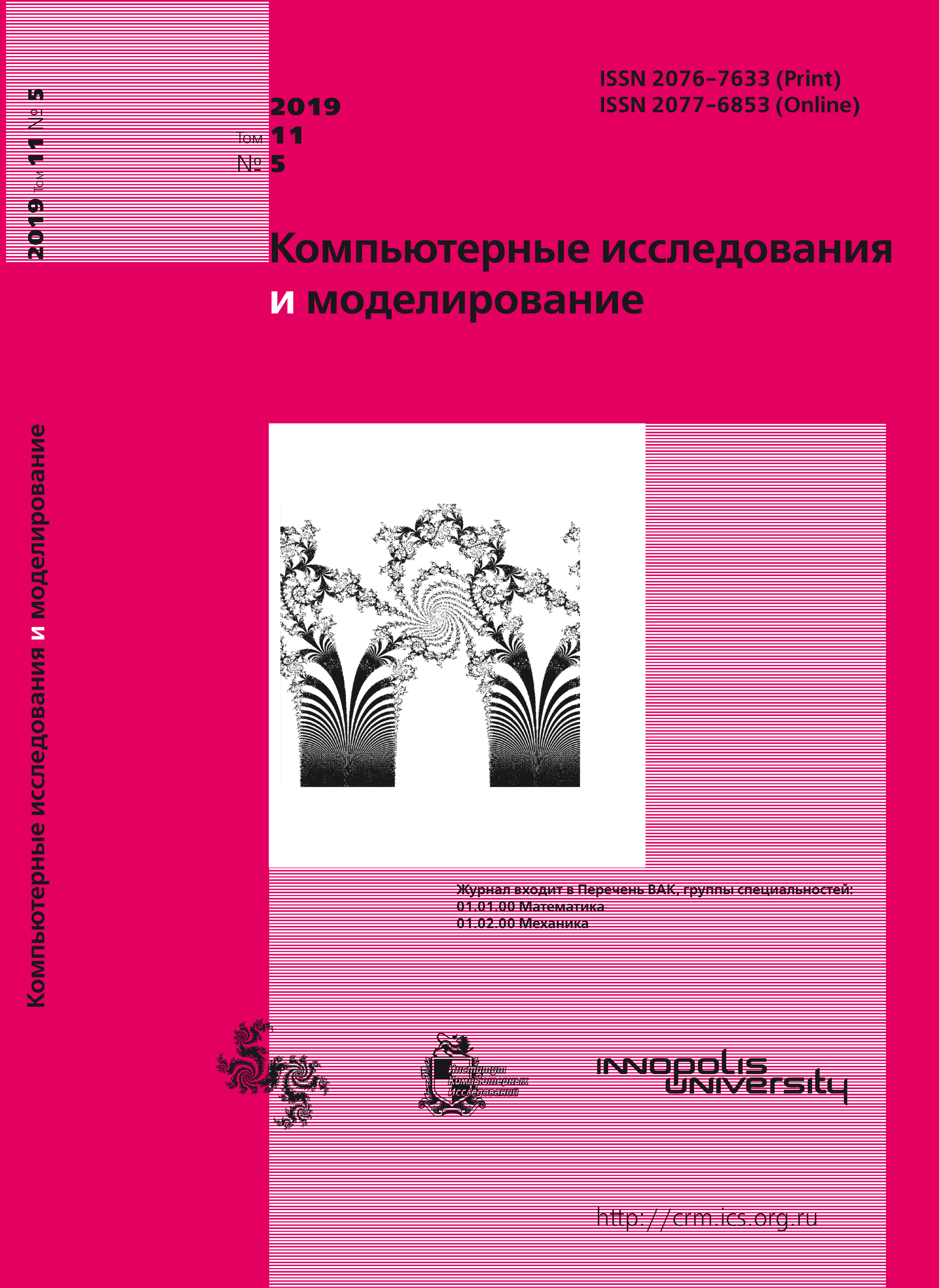All issues
- 2025 Vol. 17
- 2024 Vol. 16
- 2023 Vol. 15
- 2022 Vol. 14
- 2021 Vol. 13
- 2020 Vol. 12
- 2019 Vol. 11
- 2018 Vol. 10
- 2017 Vol. 9
- 2016 Vol. 8
- 2015 Vol. 7
- 2014 Vol. 6
- 2013 Vol. 5
- 2012 Vol. 4
- 2011 Vol. 3
- 2010 Vol. 2
- 2009 Vol. 1
Development of network computational models for the study of nonlinear wave processes on graphs
 pdf (1418K)
pdf (1418K)
In various applications arise problems modeled by nonlinear partial differential equations on graphs (networks, trees). In order to study such problems and various extreme situations arose in the problems of designing and optimizing networks developed the computational model based on solving the corresponding boundary problems for partial differential equations of hyperbolic type on graphs (networks, trees). As applications, three different problems were chosen solved in the framework of the general approach of network computational models. The first was modeling of traffic flow. In solving this problem, a macroscopic approach was used in which the transport flow is described by a nonlinear system of second-order hyperbolic equations. The results of numerical simulations showed that the model developed as part of the proposed approach well reproduces the real situation various sections of the Moscow transport network on significant time intervals and can also be used to select the most optimal traffic management strategy in the city. The second was modeling of data flows in computer networks. In this problem data flows of various connections in packet data network were simulated as some continuous medium flows. Conceptual and mathematical network models are proposed. The numerical simulation was carried out in comparison with the NS-2 network simulation system. The results showed that in comparison with the NS-2 packet model the developed streaming model demonstrates significant savings in computing resources while ensuring a good level of similarity and allows us to simulate the behavior of complex globally distributed IP networks. The third was simulation of the distribution of gas impurities in ventilation networks. It was developed the computational mathematical model for the propagation of finely dispersed or gas impurities in ventilation networks using the gas dynamics equations by numerical linking of regions of different sizes. The calculations shown that the model with good accuracy allows to determine the distribution of gas-dynamic parameters in the pipeline network and solve the problems of dynamic ventilation management.
Copyright © 2019 Kholodov Y.A.
Indexed in Scopus
Full-text version of the journal is also available on the web site of the scientific electronic library eLIBRARY.RU
The journal is included in the Russian Science Citation Index
The journal is included in the RSCI
International Interdisciplinary Conference "Mathematics. Computing. Education"






